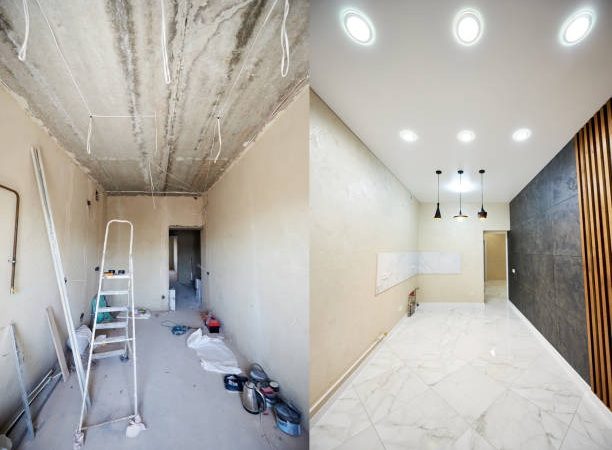Whether it’s due to a natural disaster, a burst pipe, or a kitchen fire, dealing with property damage is never easy. The road to recovery is paved with decisions, paperwork, and, sometimes, a lot of stress. Understanding the property restoration process can help reduce this burden. Essentially, property restoration involves assessing the damage, creating a plan, and implementing repairs to bring your home back to its original condition. This journey requires proper coordination, planning, and patience.
Step-by-Step Guide to Property Restoration
Property restoration can be daunting, but breaking it down into manageable steps can help. Here’s a step-by-step approach:
-
Assessment: The first step is to assess the extent of the damage thoroughly. It often involves professional input to ensure nothing is overlooked.
-
Planning: Once you know what needs fixing, the next step involves planning. This includes gathering quotes, designing a timeline, and securing funding if necessary.
-
Execution: With a solid plan in place, execution involves the actual repair work, frequently involving various contractors.
-
Review: After repairs, a final review ensures everything is up to standard and functioning correctly.
Maintaining Clear Communication
One of the most critical components of minimizing stress during restoration is maintaining clear communication with all parties involved. From contractors to insurance adjusters, everyone should be aware of their roles and responsibilities. Regular updates and a clear line of communication can help prevent misunderstandings, ensuring the restoration process runs smoothly.
Keeping Organized
Organization is key. Keeping track of documents, emails, and contracts can help reduce confusion. An organized system for managing information will make it easier to access data when needed, potentially averting unnecessary stress.
Creating a dedicated folder, either digitally or physically, to store all necessary documentation of the restoration process can provide peace of mind and ensure that important information is readily available at your fingertips.
Building a Temporary Living Plan
Sometimes, restoration efforts mean you’ll need to vacate your home temporarily. Deciding where to stay during this period can be a stressor of its own. Make early arrangements for temporary accommodation, whether it’s staying with friends, family, or a rental property. Consider what essentials you might need to bring along for an extended stay. Planning ahead can help mitigate stress when unexpected displacements occur.
Coping Mechanisms to Reduce Stress
Dealing with property restoration can take a toll on your emotional health. Employing coping mechanisms can help alleviate stress levels during this demanding time. Here are some tips to keep your stress in check:
Utilizing Self-Care Techniques
-
Physical Exercise: Regular physical activity can help boost mood and reduce stress.
-
Meditation and Mindfulness: Practicing calmness and focusing on the present can be incredibly soothing.
-
Journaling: Writing about your experiences and feelings can be a useful way to process emotions.
Seeking Support from Friends and Family
Reaching out to your support network can be very helpful. Share your concerns, express your frustrations, and lean on those who care about you. It can be comforting to know that you are not alone in this journey. Consider joining support groups or online forums where people discuss similar experiences and offer advice.
Hiring the Right Professionals
Hiring the right professionals is probably the single most effective way to reduce stress during restoration. It’s crucial to do your due diligence when selecting contractors and other service providers. Look for reputable professionals with solid reviews and proven track records. A competent restoration contractor will take control of the situation, ensuring that work is done efficiently and correctly without unnecessary delays.
Managing Finances
Property restoration can be expensive, and managing finances is another significant source of stress. Identifying all potential sources of funding is essential. If insurance is involved, keeping them updated and understanding your coverage terms will prevent unexpected costs.
Make a comprehensive budget for the restoration process beforehand and stick to it as much as possible. Knowing exactly where your money is going will reduce financial anxiety and allow you to maintain control of the situation.
Dealing with Specific Restoration Scenarios
Not all property restorations are the same. Sometimes, specific situations call for specialized handling. Such cases require single-minded focus and precise execution. For instance, fire restoration demands a significant understanding of smoke damage, odor removal, and replacing burnt structures within your property.
Partnering with specialists can make a world of difference when facing these challenges. A team experienced in targeted restoration can help ensure the work is accomplished safely and correctly, minimizing additional damage and optimizing efficiency.
Knowing Local Expertise
Each region may face unique challenges when it comes to restoring properties. Understanding the local terrain, climate, and potential hazards can guide your restoration strategy. For example, considering experts familiar with challenges related to property restoration in Victorville might be beneficial due to the area’s specific environmental considerations.
Local expertise can provide insights into the best materials and methods for the climate and help navigate any regional codes or requirements pertinent to property restoration efforts effectively.
Evaluating and Reflecting on the Process
Once the property restoration project is complete, it’s essential to evaluate the process. Did everything go according to plan? Were there unexpected obstacles? Reflecting on these questions can help close the experience and offer valuable lessons for future endeavors.
Consider conducting a walkthrough of your newly restored property with the contractor to ensure everything meets your satisfaction. Pay attention to new updates and note any areas that may still need attention. This step enables you to address any leftover concerns with the professionals on-site.
Expressing Gratitude
Lastly, expressing gratitude for everyone’s effort during the restoration process can create a positive closure. Celebrate completion with your family or team and thank those who assisted in bridging the gap between chaos and a wonderfully restored home.
Final Thoughts
Minimizing stress and disruption during the property restoration process boils down to proper planning, organization, communication, and choosing the right professionals. While this journey might be overwhelming at times, integrating these practical tips can help you steer the ship with greater ease and confidence. Remember, a newly restored property not only represents recovery but creates a space to build new memories, ensuring life continues with resilience and positivity.








